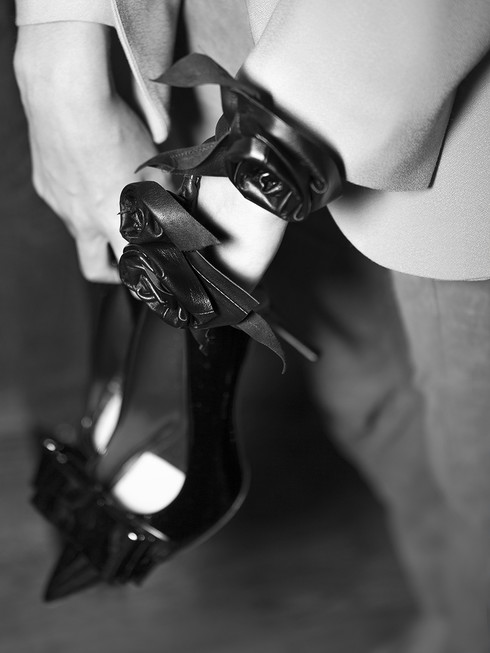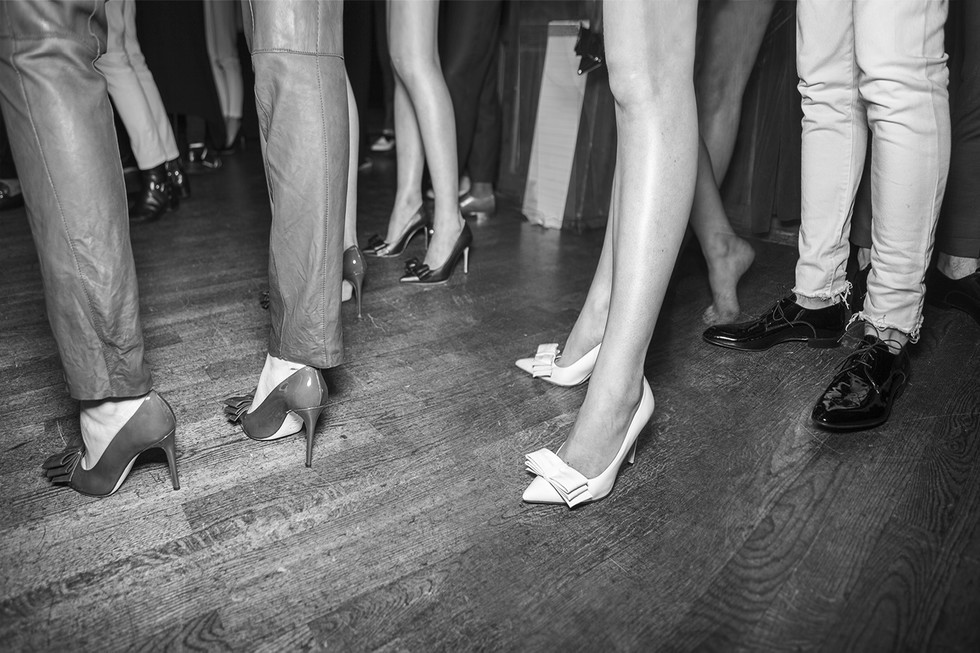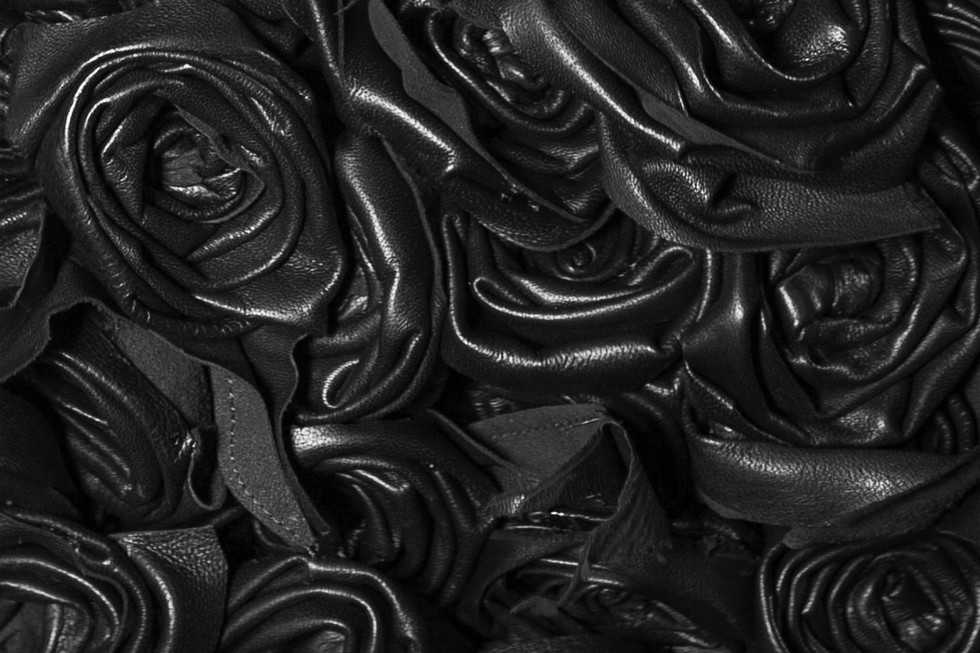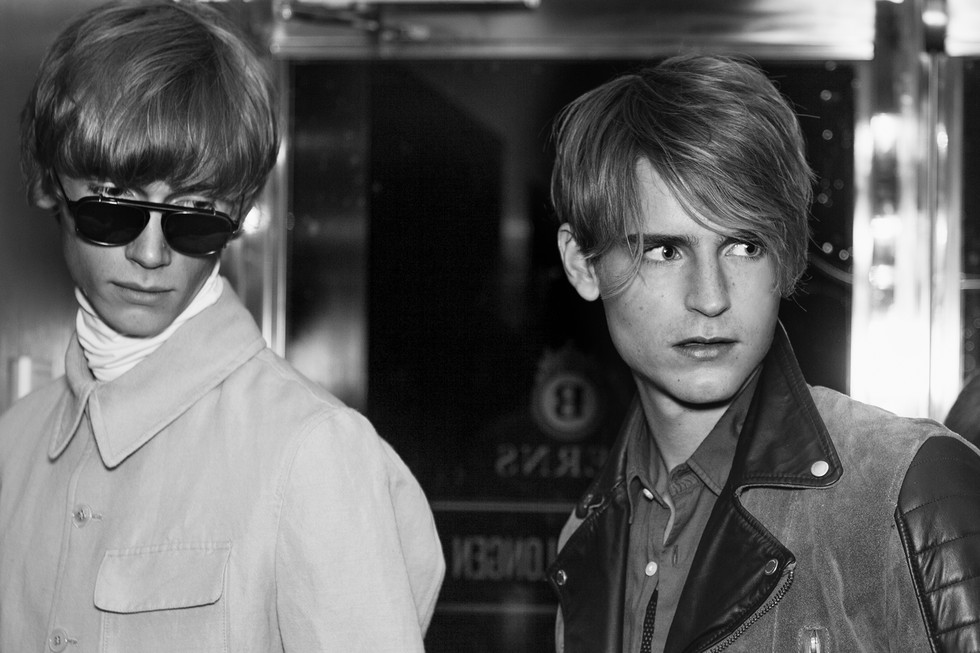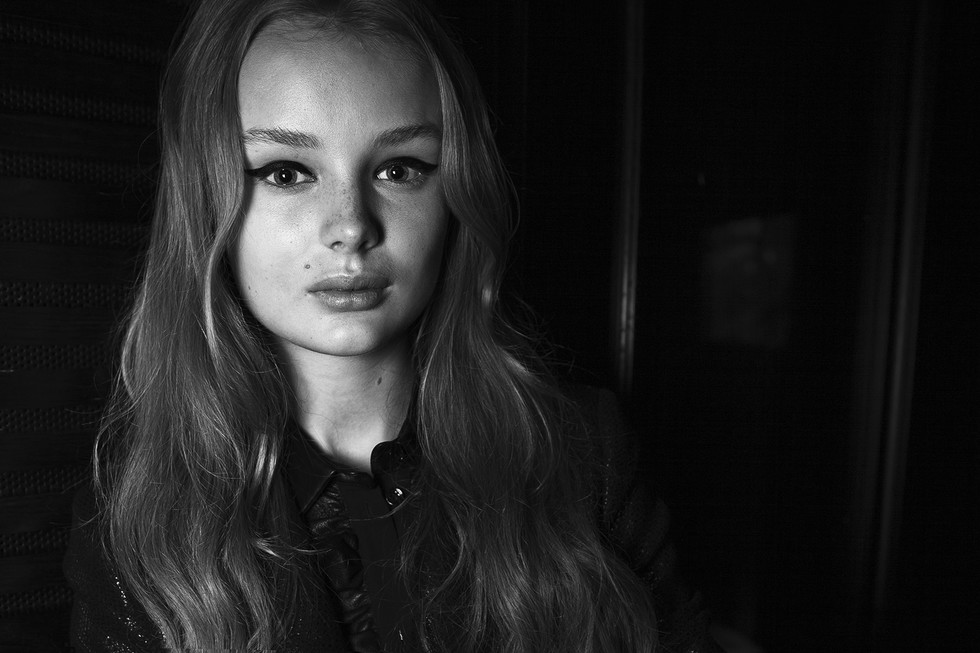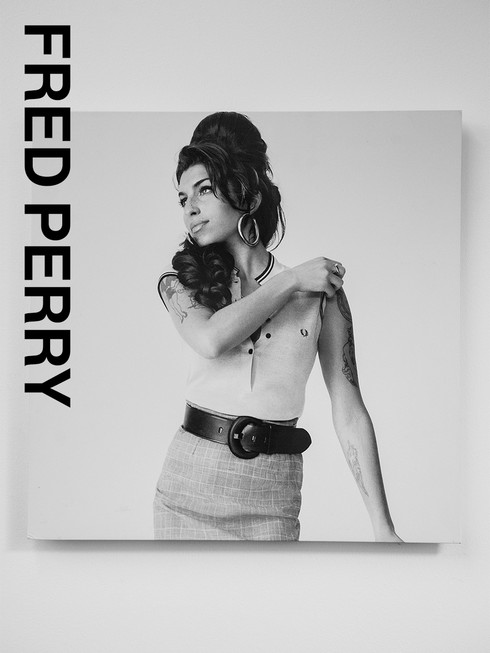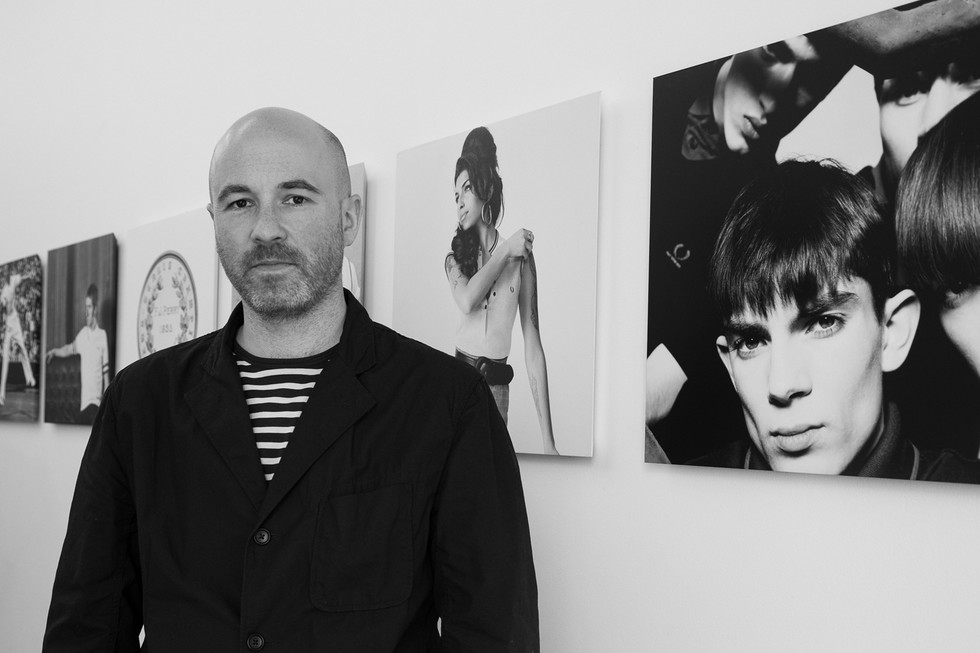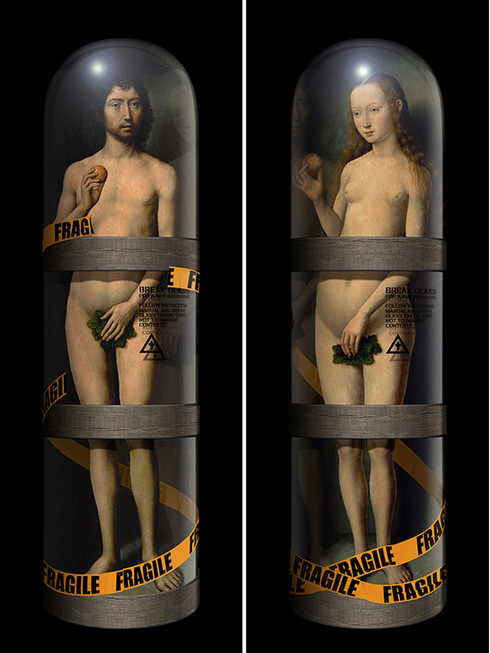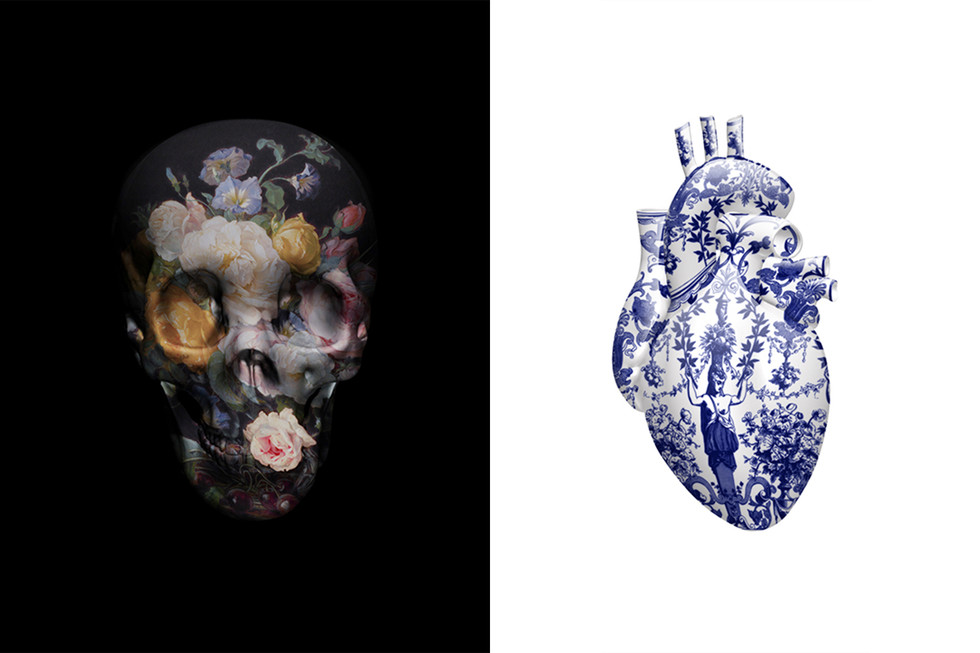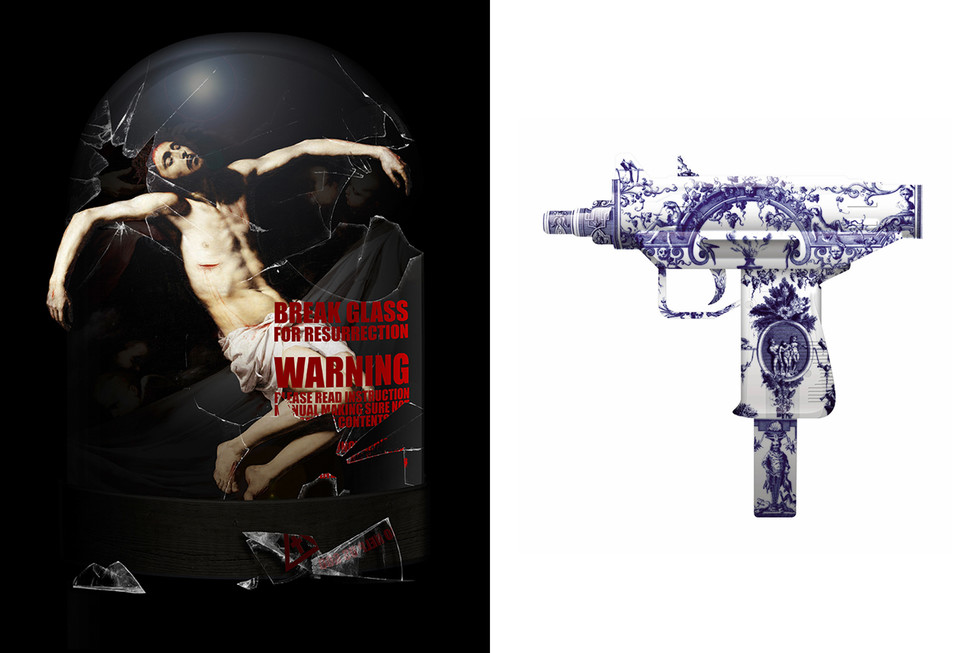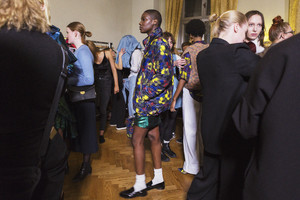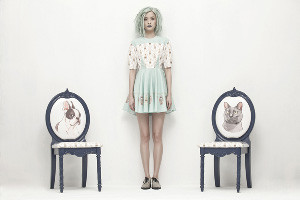Backstage at J.Lindeberg SS15
Written by Michaela WidergrenBiotopia - Unfolding an urban wilderness
J.Lindeberg has been stepping it up during the last seasons, giving us an SS15 collection including tailored suits and leather jackets with a 60s mods influence. The collection was dressed up but at the same time adjusted for a cooler Scandinavian outdoor climate.
After the show I went backstage and grabbed the one with the brains behind it all, designer Jessy Heuvelink, for a quick reflection on what we just saw walking down the runway.
MM: Are you satisfied with the show?
JH: Absolutely! I still have to see it filmed afterwards, but the energy and the feelings that I have right now are amazing. I'm extremely content.
MM: Do you have any favorite pieces?
JH: I have many favorite pieces. It's difficult to choose just one, but I would have to mention the leather pieces. I think they turned out really well. We took a step away from the clean leather we usually work with and introduced both washed leather and suede. I guess that makes it a bit more dirty and with a vintage feeling that we combined with more modern cuts. The flower inspirations I really like. The black leather roses give the collection a bit of couture edge. So there are a lot of elements I'm really happy with.
MM: How do you keep evolving for every collection, and where do you find new inspiration?
JH: Well, first of all I look around me, I see people on the streets. I think that's one of the main inspirations to actually look at what people are doing with the clothes that we're making. But also getting inspired by nature, that's one of my main sources for new ideas.
MM: Do you follow any street style bloggers for that kind of inspiration?
JH: No, not really, I want to see the people through my own perspective. I travel a lot and by that I get the chance to see so many different kinds of people. But I also think the bloggers do a fantastic job showing us street style from around the globe.
MM: Does J.Lindeberg represent a typical Scandinavian style?
JH: We definitely aim to show our Scandinavian heritage. I mean we're a Scandinavian brand but with strong international influences. I think this collections shows that we're ready to go worldwide.
MM: I loved the show, and I wonder if you, as a designer, are also involved with choosing models and music?
JH: Absolutely, I'm involved with everything from the color of the shoelaces to what kind of models we use. This season we had a casting process with 300 different models. It's extremely important to get the right characters into the clothes; sometimes something that looks good on one person can give a totally different energy on someone else.
There's a lot of movement in the backstage area. Photos are being taken and there's a circle forming around us. I can feel the other journalists eager for a few words with the designer, so I thank Jessy for the talk and move on to the next show…

